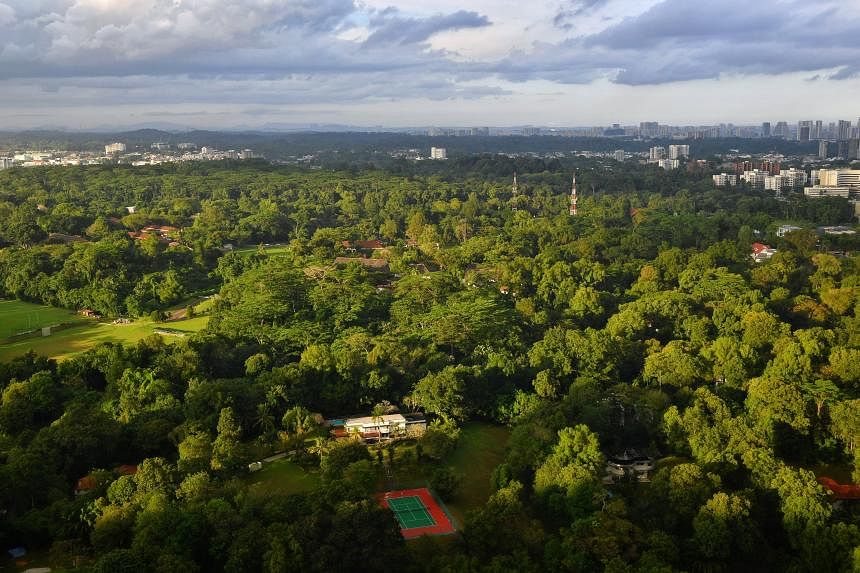SINGAPORE – A framework meant to help carbon tax-liable firms cope with the higher tax rate that kicked in from 2024 is still in the works.
In Parliament on April 3, Second Minister for Trade and Industry Tan See Leng said more details on the carbon tax transition framework, announced in 2022 alongside news of the carbon tax increase, will be revealed “in about a year”.
“Because this is really a developing framework and the companies that we are engaging are also looking at international benchmarks... in about a year from now, I think we will be able to give you a better, clearer indication. I seek your patience on this,” said Dr Tan, who is also Manpower Minister.
He was responding to a question from Workers’ Party MP He Ting Ru (Sengkang GRC), who asked for an update on the framework.
Singapore’s carbon tax regime was first implemented from 2019, with an initial tax rate of $5 per tonne of greenhouse gas emissions. This tax rate was in place until 2023.
Climate advocates had long said that a carbon tax of $5 per tonne was too low to prompt large emitters to do more to cut their planet-warming emissions.
In February 2022, Finance Minister Lawrence Wong said in his Budget speech that Singapore’s carbon tax rate would be adjusted upwards, to $25 per tonne of greenhouse gas emissions in 2024 and 2025.
This will be raised further to $45 per tonne from 2026 to 2027, with a view of reaching between $50 and $80 per tonne by 2030.
Mr Wong, who is now also Deputy Prime Minister, also said then that a carbon tax transition framework would be put in place to help trade-exposed emitters cope with the increase, while remaining competitive.
About 30 to 40 companies in Singapore from emissions-intensive sectors, such as the petrochemical and semiconductor industries, have to pay the carbon tax. These firms collectively contribute 80 per cent of Singapore’s greenhouse gas emissions.
The Republic’s greenhouse gas emissions in 2021 was 57.7 million tonnes of carbon dioxide equivalent, a record high.
Its carbon tax applies to all facilities that emit at least 25,000 tonnes of greenhouse gases in a year.
On April 3, Dr Tan said that EDB – an agency under the Ministry of Trade and Industry – has so far engaged about 20 companies on the carbon tax transition framework. They include firms from the chemicals, electronics and biomedical manufacturing sectors.
The carbon tax transition framework essentially provides large emitters with some sort of “carbon tax relief” in the form of transitory allowances.
Dr Tan said these allowances, which are limited to a portion of a company’s emissions, are based on internationally recognised efficiency benchmarks where available, or a company’s decarbonisation plans.
“The remaining emissions will be subject to the prevailing headline carbon tax rate,” he added.
Asked by Ms He whether such allowances would hinder a firm’s decarbonisation plans, Dr Tan said the Government will review and adjust the allowances based on how companies have fared in lowering their emissions, as well as based on international developments and advancements in decarbonisation technologies.
Dr Tan told the House that in time, when appropriate, the Government will release aggregated information on the amount of allowances provided.
“But this is where I want to also sound a caution. We will need to bear in mind considerations such as whether these disclosures will inadvertently divulge commercially sensitive information,” he said.
“I think you can imagine (for) the energy and chemicals sector itself, there are that number of players within Jurong Island and the entire space itself.”
Correction note: An earlier version of this story said the development of the carbon tax transition framework had been delayed. This is not the case. Information that was earlier posted on the website of the National Environment Agency had indicated an earlier timeline for the framework. The Ministry of Trade and Industry has clarified that this is inaccurate. The story has been edited accordingly.


